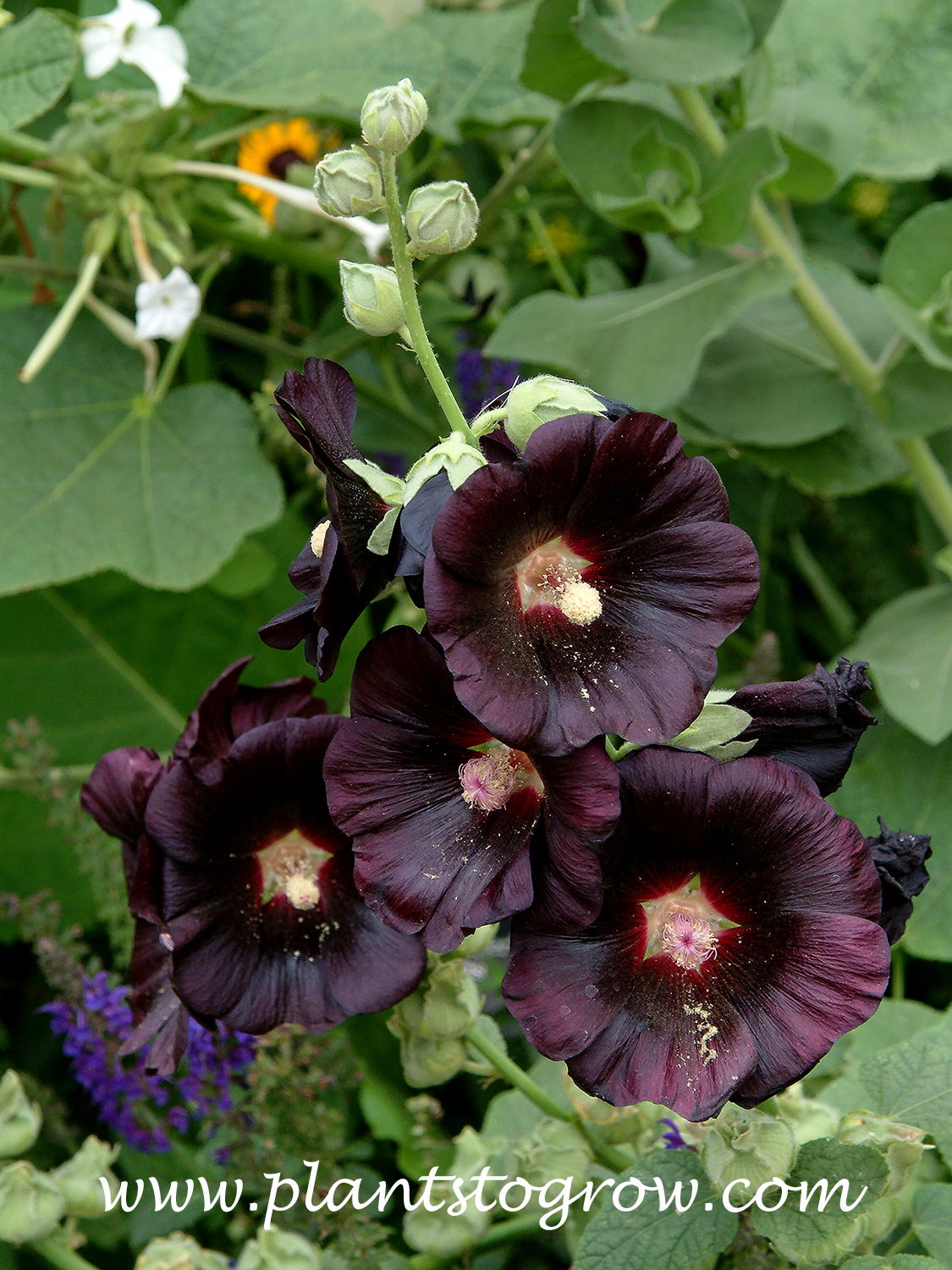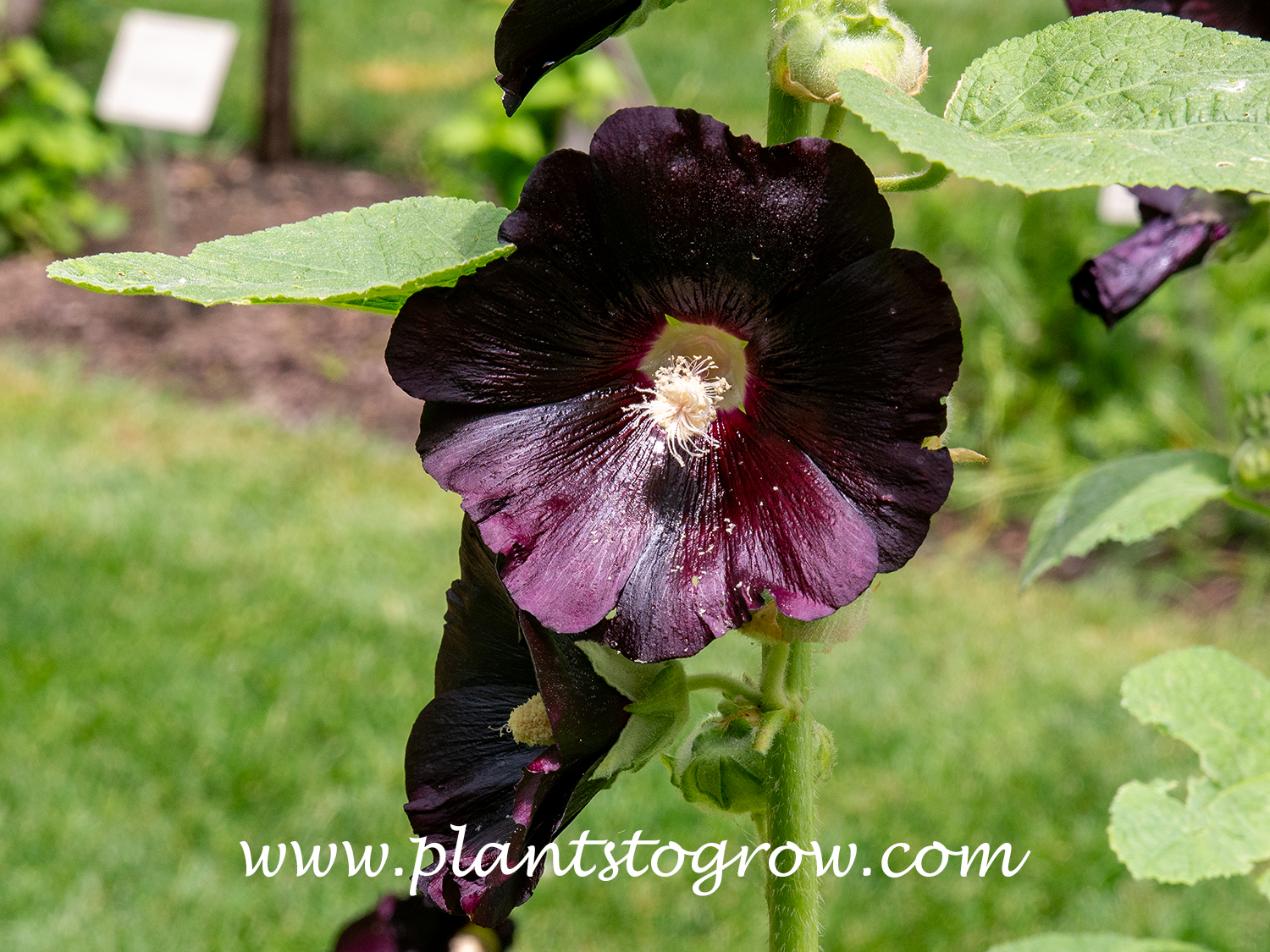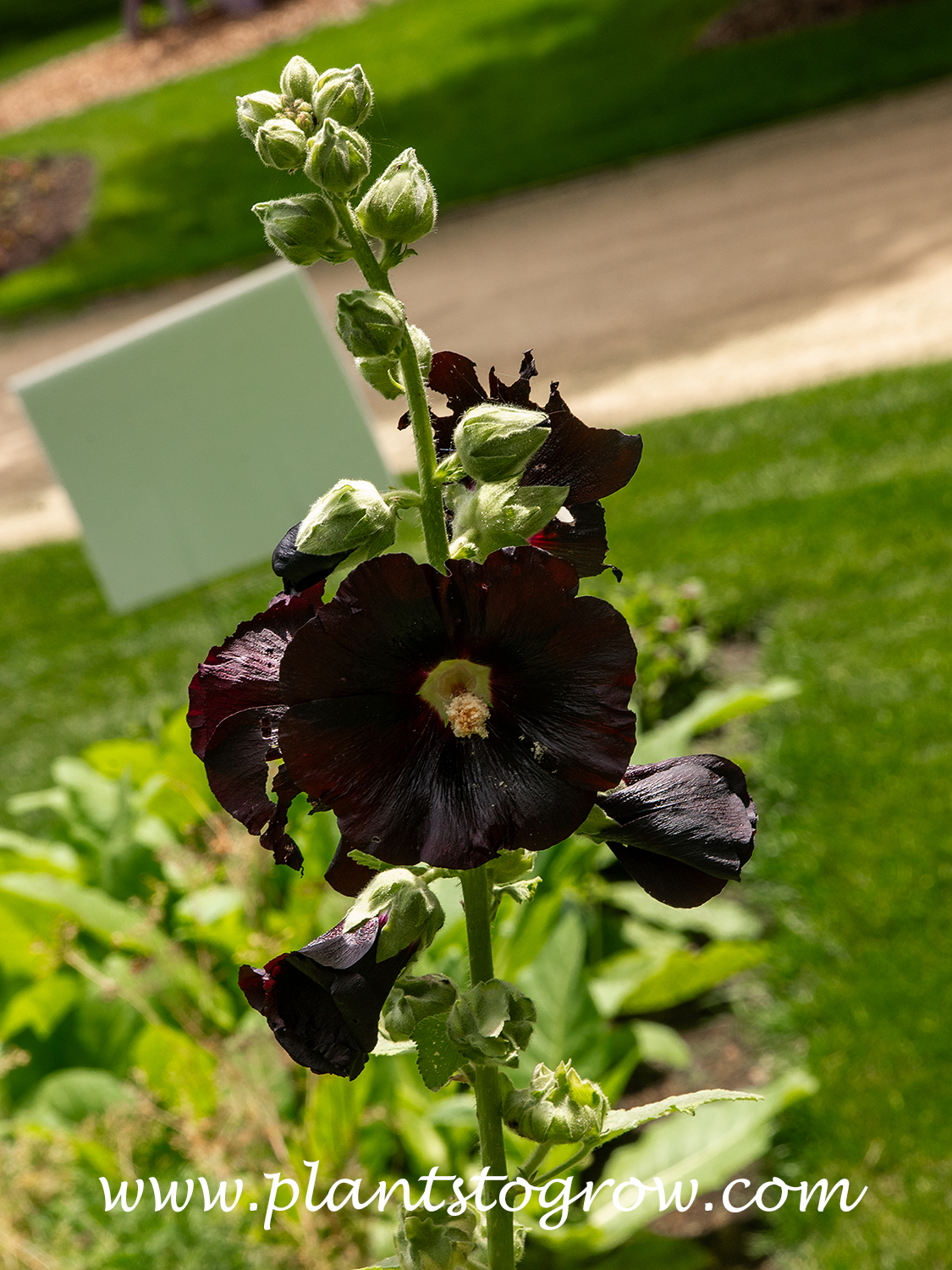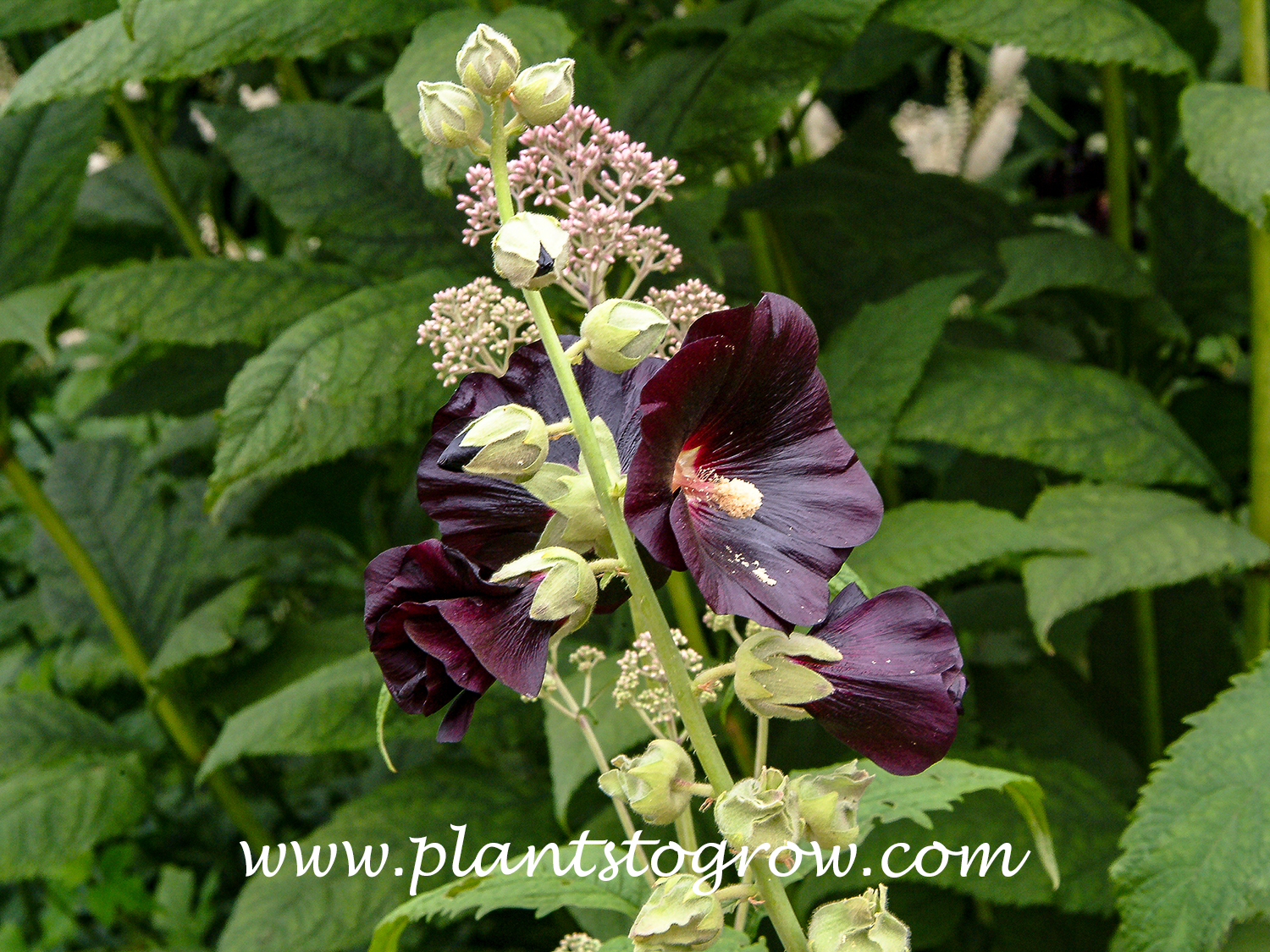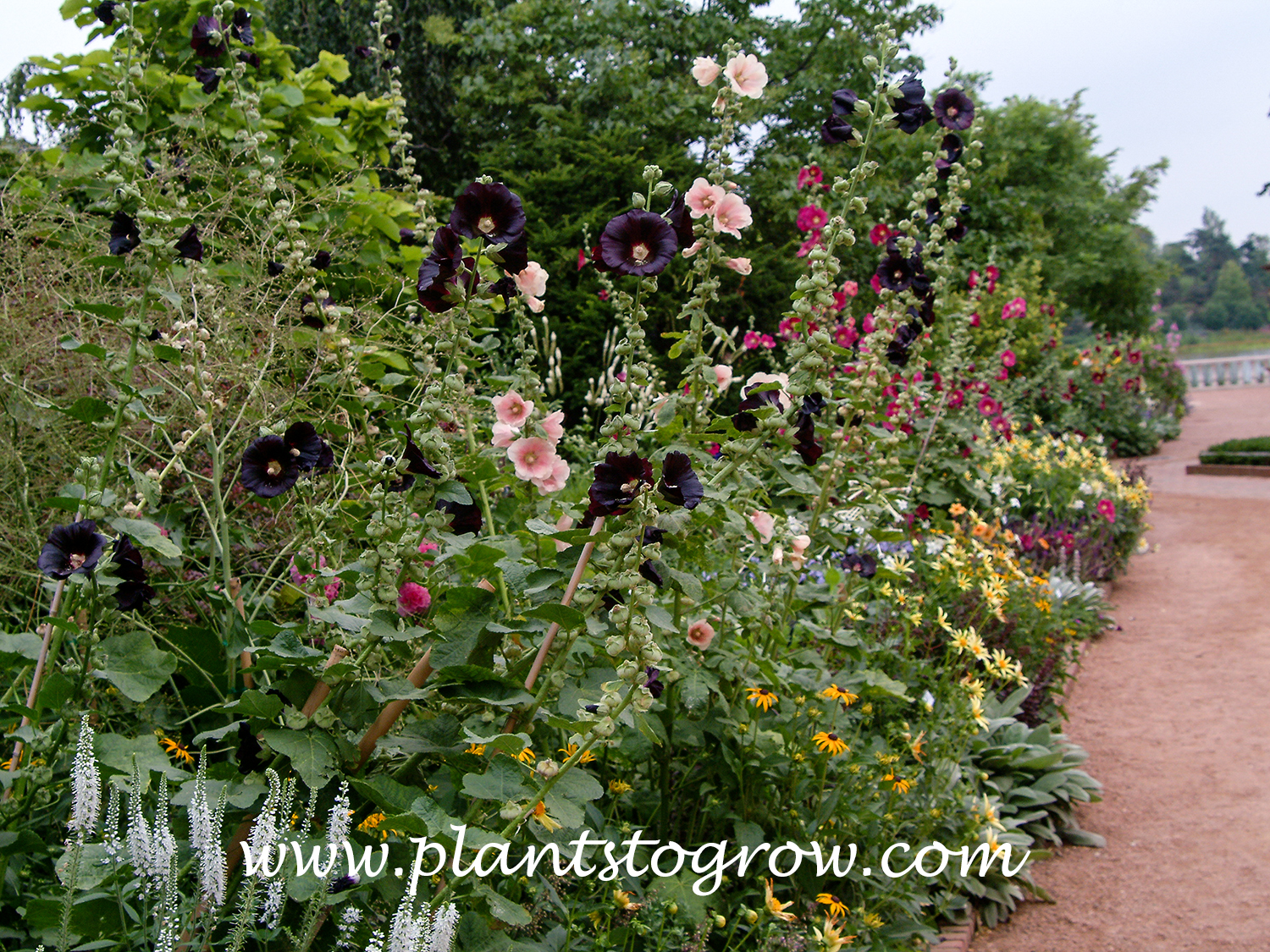| Description | Nigra Hollyhock (Alcea rosea) is a tall, upright biennial with deep black-chocolate, funnel-shaped single flowers that grow on a spike. |
|---|---|
| Pronunciation | (al-SEE-a)(Ro-see-a) |
| Plant Type | Biennials, Site author's observations, Short lived perennials |
| Hardiness Zone | 4-9 |
| Sunlight | full |
| Moisture | average, avoid water on the leaves |
| Soil & Site | average |
| Temperature | somewhat frost tolerant |
| Flowers | The single dark maroon flowers occur in terminal racemes |
| Fruit | A dry fruit is called a schizocarp. |
| Leaves | The leaves are lobed and rough-textured. Hollyhock rust, a leaf-disfiguring fungus, is the nemesis of this plant. Newer varieties are reported to be more resistant. |
| Dimensions | 5-8 feet tall |
| Maintenance | In the fall remove all dead plant parts and discard. These will carry over the rust spores. The rust is caused by Puccinia malvacearum, a fungus attacking the Malvaceae family. Staking maybe needed |
| Propagation | They are quickly grown from seed but will take two years to flower. First year the plant will grow vegetatively and the next year flower, than die. Many times succeeding generations will come from the seeds that fall too the ground. I have found that cold stratification helps germination, |
| Native Site | China |
| Cultivar Origin | Species native to China and has been grown there for perhaps 2 thousand years. Introduced into England in the 1600's. |
| Author's Notes | Hollyhock is a good indicator plant for "days gone by" and is considered an heirloom plant. It is a given that if Hollyhock and/or Lilac are growing in an old field, there was once a house nearby. |
| Notes & Reference | #28-Cottage Garden Annuals(Clive Lane), #51-Armitage's Manual of Annuals, Biennials, and Half-Hardy Perennials (Alan Arimitage), #109-Annuals and Tender Perennials for North American Gardens (Wayne Winterrowd) |

Cart
